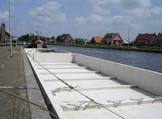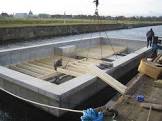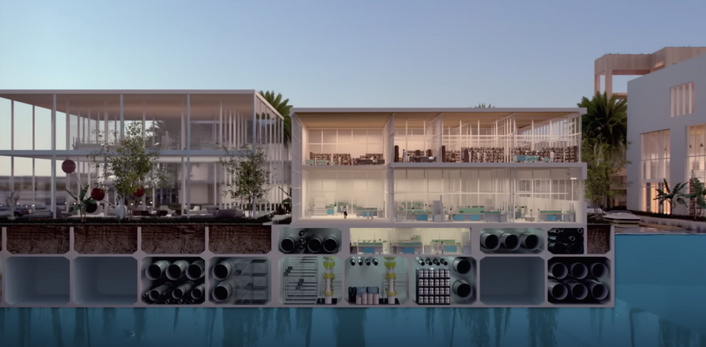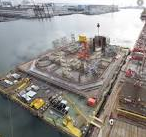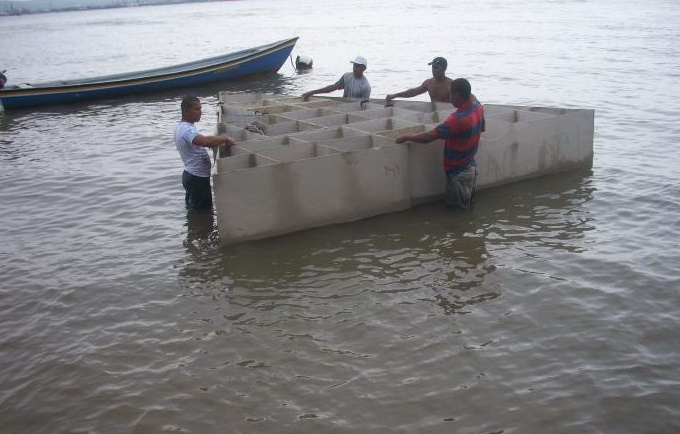
An alternative way of concrete construction - the walls are only 4 mm thick
This means that you use a factor 100 less material to get the same amount of square meters floating on the watersurface.
In consequence this technology comes a factor 100 more economic than the heavy standard cast stuff along the lines of the monaco breakwater.
Wenn you pretend to build something the size of a 7km x 7km floating city with a 49 million square meters the cost per squaremeter becomes a “paramount cost factor”…and therefore key driver for almost everything.
It is not that i suggest to “abandon the massive standard concrete building method completly”
It is rather that i want to point out, that this is not the endpoint of the “advanced cement composite technology evolution”.
And much more advanced (and spectacular) stuff can be done.
My suggestion would be to start with the established baseline of mass concrete building and take it from there.
When you build a city the engineers will want their structural concrete beams similar to land building …
They will accept advanced cement composite technology like our Floating-Rock™ only as fill in material between their “structural beams”
If we follow the picture published by the oxagon marketing group it looks like the pimary intention is that the floating base should carry something like a light 2 story building.
A much lighter floating base (like shown in the triangular piece) can carry that.
Now while every average concrete contractor can build the heavy boxy stuff along
the lines of monaco breakwater -
The light stuff like shown in the triangle needs a high grade of specialization
This also opens the door to argue that we are not a “simple concrete contractor” casting prefab mix into plywood forms
But we do advanced cement composite technology … that has a propietary technology component.
But as any voyage this starts with a simple first step - and building barges as suggested - could be this first step - being good business with high ROI from the very beginning …
more about :
advanced light shell building | advanced cement composite technology
more stuff to follow…
comments apreciated…

